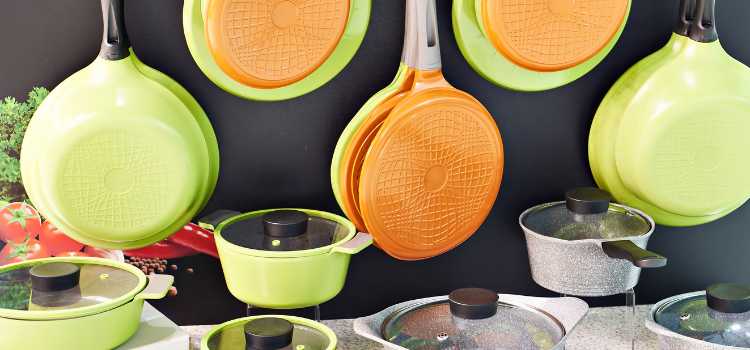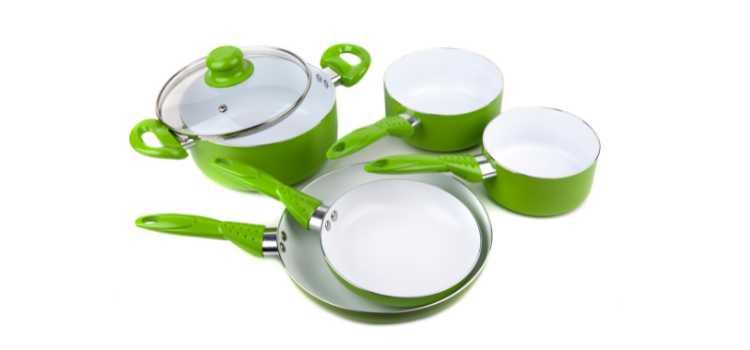As an Amazon Associate, I earn from qualifying purchases

In recent years, the kitchenware brand Thyme and Table has made quite a name for itself, becoming a popular choice for home cooks and professional chefs alike. Known for their vibrant designs and affordable prices, Thyme and Table products have caught the eye of many culinary enthusiasts.
However, one question often arises among users: Are Thyme and Table pans oven safe? This article delves into this query, exploring the nuances of cooking with these pans and how they can be safely used in the oven.
Understanding Thyme and Table Pans
Thyme and Table is a brand that has carved a niche for itself in the cookware market by combining functionality with aesthetic appeal.
Their products range from colorful non-stick pans to sleek stainless-steel options, all designed to enhance the cooking experience. The brand emphasizes quality and style, catering to modern kitchens with a flair for design.
Types of Pans Offered
Thyme and Table offers a variety of pans, each catering to different cooking needs. Their non-stick pans are particularly popular, often lauded for their easy-clean surfaces and vibrant colors. Stainless steel and other metal options are also available, providing versatility for various cooking techniques. Understanding the type of pan you have is crucial when considering oven safety, as different materials react differently to high temperatures.
Oven Safety Considerations
Material Composition
The material composition of a pan significantly affects its suitability for oven use. Thyme and Table’s non-stick pans often incorporate a coating that may not withstand extremely high temperatures, whereas their metal-based pans, like stainless steel, are typically more robust. It’s important to check the specific material of your pan as this will determine its heat tolerance and overall safety when used in an oven.
Temperature Limits
Every pan has a maximum temperature limit, and exceeding this can result in damage to the cookware or even pose safety risks. For Thyme and Table pans, it’s essential to refer to the manufacturer’s guidelines to know the safe temperature range. While some pans can handle up to 500°F, non-stick coatings might start to deteriorate at temperatures above 350°F.
Testing Oven Safety
Following manufacturer instructions is paramount to ensuring the safe use of Thyme and Table pans in the oven. These guidelines provide critical information on temperature limits and suitable cooking practices. Ignoring these can not only damage your cookware but could also affect your cooking results.
User Experiences
Many users have shared positive experiences using Thyme and Table pans in the oven, especially when adhering to the recommended guidelines. Reviews often highlight the even heat distribution and ease of cleaning. However, there are also cautions against using non-stick pans at high temperatures, suggesting that users exercise caution and follow safety advice closely.
Comparing with Other Brands

Performance in the Oven
When compared to other brands, Thyme and Table pans hold their own in terms of performance. Many users find that these pans offer comparable results to higher-end brands, especially in terms of heat distribution and cooking efficiency. However, the key difference often lies in the temperature resilience, with some competitors offering pans that can withstand higher heat.
Durability and Longevity
Thyme and Table pans are generally durable, but their longevity can be influenced by how they’re used in the oven. Frequent exposure to high temperatures, especially with non-stick varieties, can shorten their lifespan. Compared to other brands, the durability might be lesser if not used per the guidelines, but they provide excellent value for everyday cooking when used correctly.
Tips for Safe Oven Use
Best Practices
To maximize the life and performance of Thyme and Table pans in the oven, here are some best practices:
- Always preheat the oven to the recommended temperature before placing the pan inside.
- Avoid using metal utensils on non-stick surfaces to prevent scratching.
- Allow pans to cool gradually after removing them from the oven to prevent warping.
Common Mistakes to Avoid
Avoid these common pitfalls to ensure safe and effective oven use:
- Don’t exceed the maximum temperature limit specified for your pan type.
- Refrain from sudden temperature changes, such as placing a hot pan under cold water.
- Avoid using pans that have damaged or deteriorated coatings, as they can release harmful fumes at high temperatures.
Conclusion
In conclusion, Thyme and Table pans can be oven safe, provided users adhere to the manufacturer’s instructions and safety guidelines.
By understanding the specific material and temperature limits of your pans, you can enjoy a wide range of cooking techniques without compromising safety or quality. Whether you’re roasting, baking, or broiling, these pans offer versatility and reliability when used correctly.
FAQ
Can thyme and table pan go in the oven?
Yes, many Thyme and Table pans are oven safe, but it’s crucial to verify the specific temperature limits provided by the manufacturer. Typically, non-stick and ceramic-coated pans can endure up to 350-400°F. Always check product details to ensure safe oven use.
How do I know if my pans are oven safe?
To determine if your pans are oven safe, check the bottom for any oven-safe markings or refer to the manufacturer’s guidelines. Pans made of stainless steel or cast iron are often oven safe, while non-stick coatings may have temperature restrictions. Consult the product manual for details.
Are thyme and table plates oven safe?
Generally, Thyme and Table plates are not designed for oven use unless specified otherwise. Always check the product description or packaging for oven safety information. Using plates not meant for the oven can lead to cracking or damage due to thermal shock.
Can I put my pans in the oven?
Yes, you can put pans in the oven if they are made from oven-safe materials like stainless steel or cast iron. Non-stick and ceramic-coated pans might have temperature limits, so always refer to the manufacturer’s instructions to avoid damaging the cookware or affecting food safety.
As an Amazon Associate, I earn from qualifying purchases